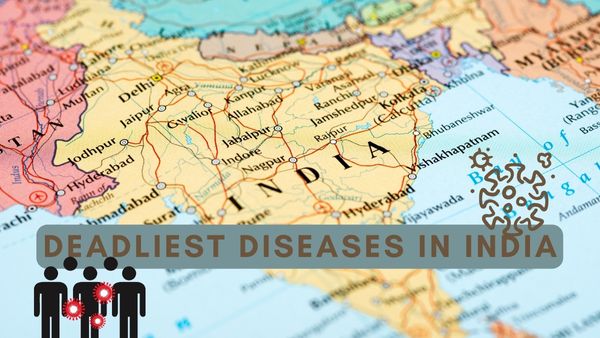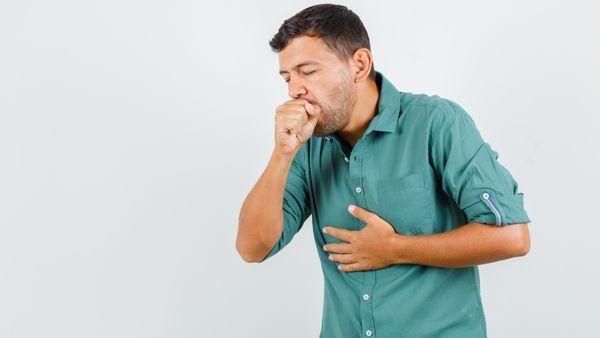Just In
- 7 hrs ago

- 16 hrs ago

- 18 hrs ago

- 19 hrs ago

Don't Miss
- Finance
 1:10 Split Coming Up: Crorepati FMCG ITC Turns Rs 1,50,000 To Rs 1.2 Crore; Makes Big Announcement; BUY?
1:10 Split Coming Up: Crorepati FMCG ITC Turns Rs 1,50,000 To Rs 1.2 Crore; Makes Big Announcement; BUY? - Sports
 Pakistan vs New Zealand Playing 11: PAK vs NZ 4th T20I Team News, Predicted Lineup And Other Details
Pakistan vs New Zealand Playing 11: PAK vs NZ 4th T20I Team News, Predicted Lineup And Other Details - Education
 JEE Main Result 2024 Out, Telangana's 15 Toppers Shine, Check Statewise List of 56 Candidates with Perfect 100
JEE Main Result 2024 Out, Telangana's 15 Toppers Shine, Check Statewise List of 56 Candidates with Perfect 100 - News
 Mangalsutra Row: Did Indira Gandhi Donate Gold During The 1962 War? The Facts Behind Priyanka's Claim
Mangalsutra Row: Did Indira Gandhi Donate Gold During The 1962 War? The Facts Behind Priyanka's Claim - Movies
 Kota Factory 3 OTT Release Date, Platform: When Will Jitendra Kumar's Web Series Premiere On Netflix?
Kota Factory 3 OTT Release Date, Platform: When Will Jitendra Kumar's Web Series Premiere On Netflix? - Travel
 Escape to Kalimpong, Gangtok, and Darjeeling with IRCTC's Tour Package; Check Itinerary
Escape to Kalimpong, Gangtok, and Darjeeling with IRCTC's Tour Package; Check Itinerary - Technology
 OPPO Find X7 Ultra Camera Deep-Dive: Pushing the Boundaries of Photography on a Smartphone
OPPO Find X7 Ultra Camera Deep-Dive: Pushing the Boundaries of Photography on a Smartphone - Automobiles
 Aston Martin Vantage Launched In India At Rs 3.99 Crore
Aston Martin Vantage Launched In India At Rs 3.99 Crore
Year Ender 2022: Top 10 Deadliest Diseases In India: Symptoms, Causes, And Prevention
India, the world's second largest country by population and one of its fastest-growing economies, faces both unique challenges and unparalleled opportunities in the field of public health.
In India, changing lifestyles, increased stress levels, and a lack of health awareness have affected many people's lives. Tragically, many of these incidents have turned fatal, leaving the grieving families behind [1].

According to the World Bank, infant mortality in India has decreased from 66 per 1,000 live births to 38 per 1,000 live births from 2000 to 2015 as a result of record-breaking economic growth over the last decade. During the same period, life expectancy at birth has increased from 63 to 68 years, while maternal mortality ratios have decreased from 374 to 174 per 100,000 live births [2].
As the healthcare industry continues to revolutionise and expand its range of products and services, here are some of the most common diseases that afflict Indians; a list of Top 10 Deadliest Diseases In India, 2022 [3][4].

1. COVID-19
In March 2020, the World Health Organization declared Coronaviruses a pandemic. Coronavirus originated in China and have since become one of the deadliest diseases in modern times. Although the pandemic began in 2019, COVID continues to be prevalent even in 2022.
Symptoms of Covid-19 include fever, cough, fatigue, loss of appetite, sore throat, runny nose, difficulty breathing, chills, muscle aches, chest pain, and pink eye.

There are several ways in which Covid-19 can spread from person to person, including coughing, sneezing, breathing, inhaling droplets in the air, and touching. It can also be spread by touching.

Avoid close contact with the sick, maintain a safe distance, wash hands regularly, use alcohol-based hand sanitizer, wear a mask to cover your face when you leave the house, avoid touching your eyes or nose with dirty hands, and stay home as much as possible.

2. Cardiovascular Diseases (CVD)
The disease is among the top 10 causes of death in India and includes heart-related diseases.
CVD symptoms include pain in the chest, shortness of breath, numbness in the arms and legs, discomfort in the chest, and pain in other parts of the body such as the neck, back, jaw, throat, upper abdomen, etc.
Cardiovascular Diseases (CVD) are caused by high tobacco consumption, a lack of physical activity, poor diet, hereditary factors, existing diseases such as hypertension and high cholesterol, obesity, and the presence of a family history of this disease.
It is possible to prevent cardiovascular disease (CVD) by staying physically active, exercising regularly, keeping an eye on your weight, curbing your smoking habit, keeping an eye on your blood pressure and cholesterol, and eating foods that contain fiber, potassium, magnesium, and other nutrients.

3. Stroke
One of the most dangerous diseases in the country is stroke, which occurs when an artery in the brain is blocked.
Stroke symptoms include numbness in the arms, legs, or face, headaches, difficulty seeing (one eye or both eyes), difficulty walking, and difficulty communicating
People with high blood pressure, high cholesterol, and diabetes are at greater risk for strokes, as are those who are chain smokers, those who have suffered a brain haemorrhage, and those with heart disease.
To prevent strokes, quit smoking, control blood pressure, follow a healthy lifestyle, exercise regularly, limit alcohol consumption, consume high fibre and low fat foods.

4. Diabetes
A serious metabolic disorder, diabetes can affect anyone - regardless of age and gender. It is caused by an increase in the blood sugar levels that can trigger several undesirable symptoms that can affect their health and life. Diabetes is of two types: Type 1 Diabetes and Type 2 Diabetes.
Diabetes symptoms include extreme hunger, weight loss without reason, fatigue, thirst all the time, and frequent urination.
A number of factors contribute to diabetes, including unhealthy eating habits, inactivity, high blood pressure, and obesity.
The prevention of diabetes includes regular exercise, avoiding an inactive lifestyle, eating nutritious meals, avoiding smoking, and eating a fiber-rich diet and reducing sugar intake.

5. Diarrhoea
In a patient with diarrhoea, loose stools occur three or more times a day, which results in a decrease in water and salt in the body, which causes dehydration.
Diarrhoea symptoms include loose stools and mucus in the stool, nausea and bloating, cramps in the abdomen, blood in the stool, and uncontrolled bowel movements.
Diarrhoea is caused by lack of clean water, poor sanitation, malnutrition, and a weak immune system.
Diarrhoea prevention include hand washing, maintaining hygiene, and avoiding the use of aspirin and steroids.

6. Malignant Tumours (cancer)
There are many cancerous cells in the body that grow uncontrollably and spread throughout the body, making it life-threatening. These are among the most deadly diseases not only in India, but in the entire world.
Early signs of malignant tumours may include no symptoms or a painless lump.
Malignant tumours are caused by exposure to ionizing radiation, genetic transmission, presence of pathogens, and exposure to toxic chemicals.
Avoiding tobacco consumption, eating a healthy diet, receiving regular immunizations, and maintaining a healthy weight are all important strategies for preventing malignant tumours.

7. Respiratory Diseases
One of the most dangerous diseases in India is respiratory infection, especially lung diseases, pneumonia, and severe bronchitis, which cause a large number of deaths every year.
Symptoms of respiratory diseases include fever, coughing, nasal congestion, sneezing, and runny nose, shortness of breath lasting for several weeks, and sore throat.
The causes of respiratory diseases include excessive exposure to toxic substances, a low immune system, and smoking and air pollution.
In order to prevent respiratory disease, one should give up smoking, exercise regularly, be active, wear masks, avoid breathing polluted air, and consume a diet rich in proteins.

8. Tuberculosis (TB)
Despite being a life-threatening disease, tuberculosis is curable. It attacks the lungs as well as other body parts.
Symptoms of tuberculosis (TB) include fatigue, bloody coughs, fevers, chills, sweating at night, and weight loss.
Tuberculosis (TB) can be caused by a number of factors, including a weak immune system, living in conditions conducive to the development of such a disease, and being exposed to infected people's coughing and sneezing.

Tuberculosis (TB) prevention involves avoiding close contact with infected individuals, receiving vaccinations, and eating a healthy diet.

9. Chronic Obstructive Pulmonary Disease (COPD)
A lung condition that causes difficulty in breathing, COPD is also one of the most common diseases in India. It is a disease that affects thousands of people throughout the world every year.
Chronic Obstructive Pulmonary Disease (COPD) symptoms include wheezing, tightness in the chest, lack of energy, frequent respiratory infections, swelling of the legs and feet, and shortness of breath.
Smoking, exposure to chemical fumes, and hereditary factors are some of the causes of Chronic Obstructive Pulmonary Disease (COPD).
Keeping a check on your family history of such diseases, avoiding dust and fumes at home or in the office, and staying away from air pollution are all ways to prevent chronic obstructive pulmonary disease (COPD).

10. Alzheimer's
One of the most common kinds of dementia, Alzheimer's Disease (AD) is a neurodegenerative disease.
Alzheimer's symptoms include difficulty with work, forgetting things, misplacing articles, difficulty writing and speaking, and poor judgment.
A family history of Alzheimer's disease, aging, a healthy lifestyle, inherited from a family member, or an injury to the head can be some of the causes.
Eating heart-healthy diets, avoiding fatty food items, quitting smoking, and controlling risk factors are all effective ways to prevent Alzheimer's disease.

On A Final Note...
However, the rapidly developing health system of the Indian nation remains a concern as the government strives to provide comprehensive health coverage to all [5]. Health and health care systems differ between poorer and richer states, and health care systems are underfunded and often inefficiently managed and under-regulated, creating disparities in health and health care.
Government-financed health insurance programs are increasing coverage, but the coverage remains limited.
-
 lgbtqPowerful LGBTQ Quotes That Will Fill You With Pride And Keep You Motivated In 2023
lgbtqPowerful LGBTQ Quotes That Will Fill You With Pride And Keep You Motivated In 2023 -
 astrologyNew Year 2023: Coffee Preferences According To Your Zodiac Sign
astrologyNew Year 2023: Coffee Preferences According To Your Zodiac Sign -
 insyncNew Year 2023: Foods That Will Bring Good Luck This Year
insyncNew Year 2023: Foods That Will Bring Good Luck This Year -
 insyncNew Year 2023: Make Resolutions For Personal Growth And Empowerment
insyncNew Year 2023: Make Resolutions For Personal Growth And Empowerment -
 disorders cureYear Ender 2022: All The Major Diseases Reported In 2022
disorders cureYear Ender 2022: All The Major Diseases Reported In 2022 -
 wellnessYear Ender 2022: Most Searched Ayurvedic Herbs In 2022 And Their Uses
wellnessYear Ender 2022: Most Searched Ayurvedic Herbs In 2022 And Their Uses -
 wellnessYear-Ender 2022: The Must-Try Yoga Trends Of 2022
wellnessYear-Ender 2022: The Must-Try Yoga Trends Of 2022 -
 wellnessYear Ender 2022: Top Health And Hygiene Lessons Of The Year
wellnessYear Ender 2022: Top Health And Hygiene Lessons Of The Year -
 womenYear Ender 2022: The Hottest And Popular Saree Trends Of 2022
womenYear Ender 2022: The Hottest And Popular Saree Trends Of 2022 -
 remediesYear Ender 2022: Vastu Tips For A Happy And Prosperous New Year 2023
remediesYear Ender 2022: Vastu Tips For A Happy And Prosperous New Year 2023 -
 insyncNew Year's Eve 2023: Celebrations, History And Significance
insyncNew Year's Eve 2023: Celebrations, History And Significance -
 pulseYear Ender 2022: Weird Food Combinations That Went Viral This Year
pulseYear Ender 2022: Weird Food Combinations That Went Viral This Year


 Click it and Unblock the Notifications
Click it and Unblock the Notifications



